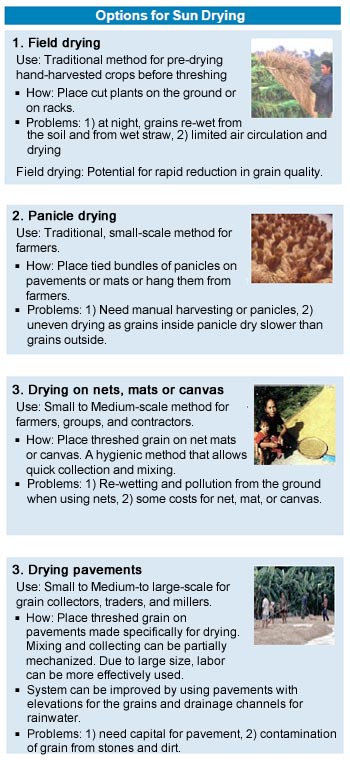Sun drying

What is sun drying?
Sun drying is the traditional method for reducing the moisture content (MC) of paddy by spreading the grains in the sun. The solar radiation heats up the grains as well as the surrounding air and thus increases the rate of water evaporating from the grains.
Why sun dry?

Sun drying has lower cost compared to mechanical drying. It requires little investment and is environmental friendly by using the sun as heat source, thus, carbon dioxide (CO2) is not produced.
How to sun dry?
- Spread the grains in thin layers, ideally 2−4 cm but less than 5 cm.
- For faster drying, place the grains/panicles in well-aerated or windy areas.
- Mix grain frequently (at least every 30 minutes).
- Monitor grain temperature and MC using thermometers and moisture meters.
- Shade or cover the grain when grain temperatures are above 50ºC (42ºC for seeds).
- To prevent cracking, collect or cover the grain during rain and at night.
- To minimize cracking, use sun drying for first stage drying (i.e., removal of water from the outer layer of the grain) to 18% MC. Such grain can be safely stored for two weeks. Then use other drying systems for drying from 18−14% MC.
- Keep animals off the grain.
- Avoid drying grain on public roads as the grain gets dirty, traffic is hindered, and it can cause accidents.
Limitations of sun drying:
- Not possible during rain or at night. Delays in drying lead to excessive respiration and fungal growth causing grain losses and yellowing.
- Labor intensive and has limited capacity.
- Temperature control is difficult. Overheating of grains can result in low milling quality caused by cracked grains.
Prepared by M Gummert with input from JF Rickman (2004), updated by M Gummert (2010)







